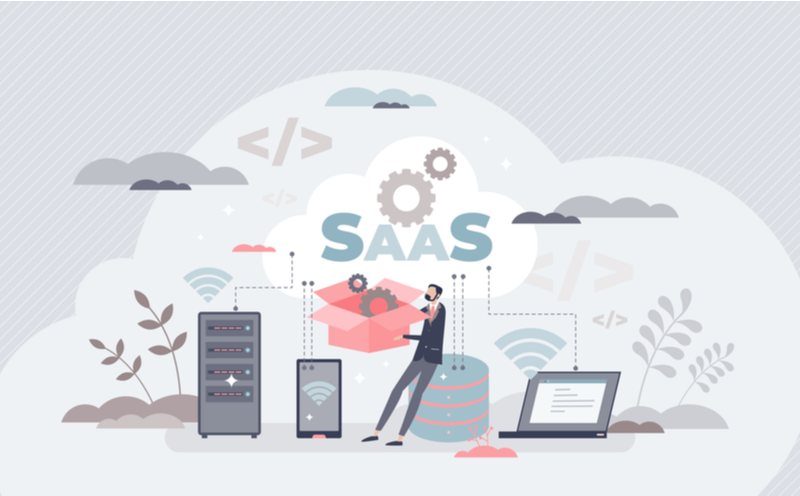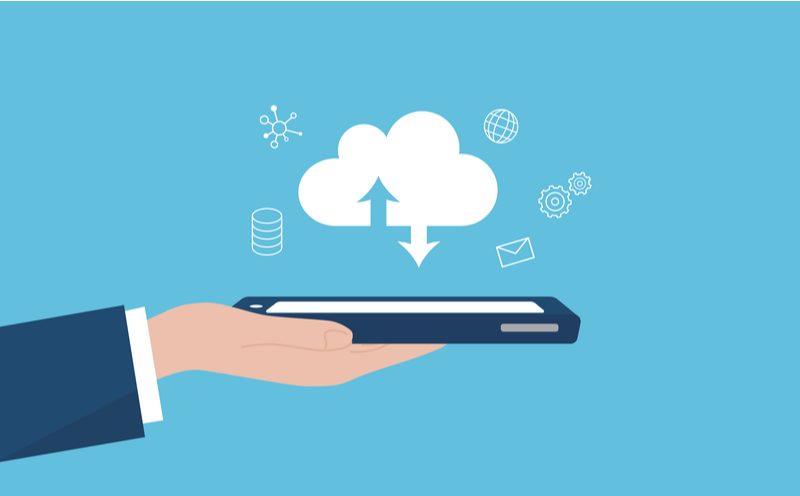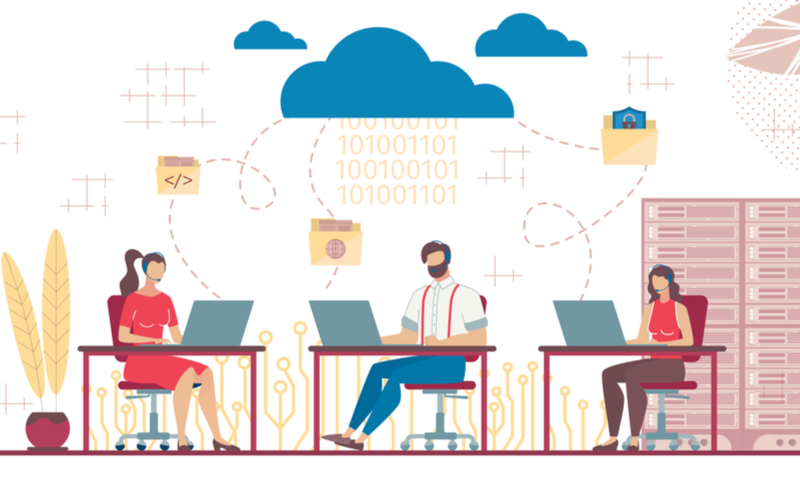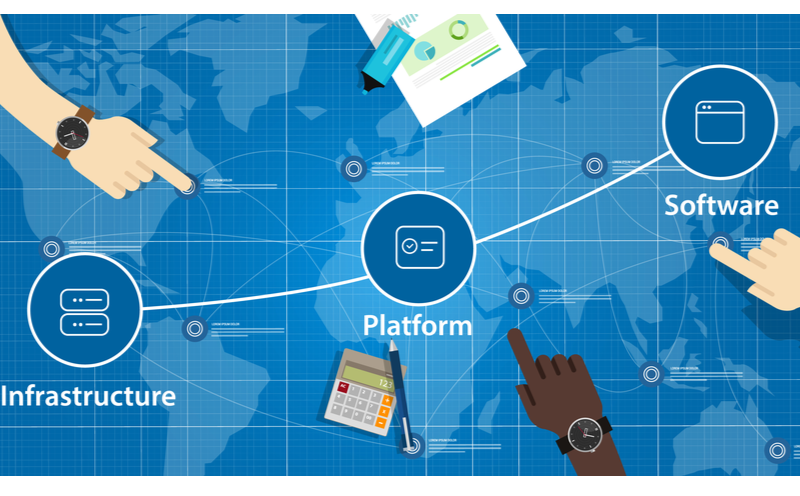SaaS Sales: A Beginner’s Guide to Start & Succeed in 2023

In this article
The Software-as-a-Service (SaaS) model—in which companies buy subscriptions to software hosted in the cloud—has grown rapidly in recent years. In 2021, it became the largest market segment in public cloud services, reaching a valuation of $117.7 billion. Around 99% of businesses now use at least one SaaS solution, and software companies are doubling down on their investment in the SaaS model because it offers rapid deployment, increased flexibility, and lower costs.
This means that there’s never been a better time to get into SaaS sales. With almost every major software company needing SaaS sales reps to help expand their customer base, the career opportunities for software sales reps are abundant, the salaries and commissions are competitive, and the ability to closely work with innovative technologies keeps the job exciting and ever-evolving.
What Is SaaS Sales?
SaaS sales is the discipline of selling SaaS subscriptions to potential customers. To understand how this works, it helps to first understand traditional software sales. Before SaaS, companies purchased software licenses, which allowed them to use the software on a predetermined number of computers. The software was usually hosted on the company’s servers, and only computers granted access to those servers could use the software.
Software-as-a-Service has completely changed the game. Instead of buying one-off licenses and having software hosted on local servers, customers can now buy software subscriptions and access software hosted in the cloud. This has a number of advantages for both the software creator and the customer. Customers no longer have to build server infrastructure to host software, and customers only have to pay for the subscription for as long as they choose to use the software. For software developers, the SaaS model allows them to be responsive and agile by publishing incremental updates in real-time.
About SaaS

Before we talk about SaaS sales, let’s first go over some of the basics.
What Does “Software-as-a-Service” Mean?
SaaS is web-based software. This means that customers don’t have to handle a physical product, host software on servers, and are not limited by the number of licenses they’ve purchased. Customers also benefit from automatic software updates, access from multiple devices, and no installation requirements.
Instead of making a one-off payment for a static product, customers instead pay a monthly or annual subscription.
What Are Some Examples of SaaS Products?
SaaS products span B2B/enterprise technologies and consumer-facing products.
Popular enterprise SaaS products include:
- Adobe Creative Cloud
- Shopify
- Zendesk
- Asana
- Box
- Cisco
- DocuSign
- GitHub
- HubSpot
- Salesforce
- Slack
- Oracle
- Atlassian
- Workday
- MailChimp
- Square
- Amazon Web Services
On the consumer side, popular SaaS products include:
- Google G Suite
- Netflix
- Dropbox
- Amazon Prime Video
- Spotify
- Intuit
- Blackboard
- 1Password
About Selling SaaS

The SaaS model has changed how companies buy and use software. It has also changed how sales reps sell software.
Is There a Difference Between Selling SaaS and Selling Another Product or Service?
While many sales representative skills are transferable (i.e. devising a sales strategy, identifying qualified prospects, customer relationship management, conducting product demos, and getting potential clients into the sales funnel), the SaaS model does require some additional specialties.
Unlike traditional software, which is usually a static product, SaaS products are built, maintained, and supported by a software company, meaning that they are constantly evolving and receiving incremental updates. This also means that they can cost more to build and maintain and, as a result, require a longer sales cycle. The customer journey may require SaaS sales professionals to engage in consultative selling, detail new product features, customize pitches for each prospect, continue selling to current customers, and bring on engineers and executives to help with difficult sales.
What Are Some Common SaaS Sales Models?
There are four common SaaS sales models used by most companies:
Solution selling. This represents a consultative approach where the sales rep attempts to understand a prospect’s pain points and recommends bespoke solutions to help them solve a specific business problem.
Gap selling. Unlike solution selling, which assumes that the client can clearly identify the problems facing their business, gap selling is a sale on the basis of a desired future outcome. It involves identifying the gap between where the prospect is (i.e. 20% annual customer churn) and where they want to be (less than 5% annual customer churn) and selling a solution to address the gap.
Challenger sales method. In this method, a sales rep teaches the prospect about the product and takes control of the sales process. By conducting thorough research on the client beforehand and seeking to understand their needs, the challenger sales method involves delivering an irresistible pitch and tactfully pressuring the prospect.
The self-service model. The customer self-service model relies on robust digital infrastructure to educate the consumer, help them understand the different pricing options, and complete a purchase autonomously without ever interacting with a sales rep.
How Does the SaaS Sales Process Usually Work?

The typical SaaS sales process shares many similarities with other software sales processes. For example, SaaS sales teams usually work together to sell software to clients by identifying potential customers through research, connecting with prospects through email and phone calls, pitching prospective clients, conducting product demos, developing business relationships, and managing relationships with current clients to promote customer retention.
Where they differ is in the length of the sales cycle. SaaS sales cycles vary depending on the price of the product, the complexity of the software, and the type of customer. SaaS sales cycles can often take longer than other tech sales cycles because of a number of factors:
Free trials. Many SaaS companies offer free trials of their software. While this is an effective strategy for getting prospective customers into the sales pipeline, a 30-day trial period can lengthen the sales cycle by delaying when trial users have to make an order commitment.
New markets. Given that SaaS is a relatively new method of delivering software, companies entering new markets typically have to spend more time doing product marketing, education, and helping both enterprise customers and individuals understand their value proposition. Sales teams also need to invest time in building new business relationships, identifying qualified leads, and devising ways of targeting qualified prospects.
Enterprise clients. Enterprise sales and B2B sales, though financially rewarding, can often have a long sales cycle because of the number of stakeholders involved and the sign-offs required to close a deal.
Software complexity. Complex software often calls for more involved sales techniques such as product demonstrations involving engineers and executives and ensuring that stakeholders who are willing to advocate for the product are in the room.
What Does a SaaS Sales Team Usually Look Like?

SaaS sales teams tend to look like most other tech sales teams. They comprise sales development representatives (SDRs), business development representatives (BDR), account managers, sales managers, sales engineers, outside sales reps, and other support and operations staff.
What Are Some Common KPIs for Selling SaaS?
Key performance indicators are used to help sales and marketing teams measure the efficacy of their sales efforts. Common KPIs for selling SaaS include sales metrics (such as monthly revenue and recurring revenue), customer acquisition cost, customer churn rate, lifetime value of a customer, and visitor and lead conversion rates.
Getting Into SaaS Sales: What To Expect
There is no set path for getting started in SaaS sales, but there are some commonalities between most SaaS sales positions:
Background
Because many of the required skills can be learned on the job, SaaS sales reps typically don’t need a college degree or prior industry experience to land an entry-level role. Hiring managers typically look for candidates with strong people skills, a history of collaboration, and the ability to adapt an organization’s sales processes.
Skills
Sales reps are expected to possess a range of soft and technical skills. In the former, candidates should be personable, good listeners, detail-oriented, and clear communicators. On the technical front, they should have sales skills such as product knowledge, CRM experience, email proficiency, and familiarity with client management tools. Many of the skills developed in customer experience and support roles are usually transferable to sales roles.
Salary
The average salary of a SaaS sales representative in the United States is $79,451, which includes an average base salary of $52,173 per year, with commissions averaging $27,277 per year. Additional pay may include cash bonuses, commissions, tips, and profit-sharing.
How To Succeed in SaaS Sales

If you’ve managed to get your foot in the door in SaaS sales, here are some tips for how to supercharge your career:
Pick an Industry That Interests You
As a SaaS sales representative, you’ll have to know the software you’re selling inside and out, have an in-depth knowledge of the wider product sector, know your competitor’s products, and be passionate about helping clients solve their business problems. Because of this, it helps to choose an industry that interests you, and be selling a product you believe in.
Perfect Your Demo and Pitch
You only have one chance to make a first impression, so it’s important to perfect your demo and pitch. This means knowing the product features inside out, understanding and catering to different buyer personas, being able to explain to a non-technical audience the value proposition of your software, and using the appropriate storytelling tools to win over potential clients.
Find a Mentor

Research has shown that mentors play a valuable role in career growth because of the insights and guidance they provide. When it comes to SaaS sales, mentors can share sales experience, offer guidance on navigating challenging prospects and deals, and create networking opportunities. Consider reaching out to an experienced sales professional within your organization for mentorship.
Track Everything
Strong organizational skills and being attentive to details are important skills for any tech sales representative, but especially so for SaaS salespeople. So it’s important to use the latest sales tools, such as customer relationship management (CRM) software and sales intelligence platforms. In addition to client and prospective customer information, SaaS sales reps should also track key metrics such as sales goals, customer acquisition costs, customer churn rate, average customer lifespan, and deal cycles.
Know You Can’t Do Everything
As a sales rep, you’ll likely work with a larger sales and marketing team, so don’t be afraid to rely on your team. If you find yourself trying to do everything, from identifying leads to conducting product demos, reviewing sales contracts, and managing existing client relationships, you’ll be spread too thin. But if you approach the sales funnel as a team, then you can figure out where you can contribute the most value.
Find the Approach That Works for Your Audience

Different audiences will respond better to different methods of communication, sales tactics, and incentives. This is why it’s important to understand your target audience and know their needs, goals, budgets, and reservations. Consider whether target customers might respond well to free trials, product discounts, in-depth demos with sales engineers, frequent email check-ins, or low-touch correspondences.
SaaS Sales FAQs
Still have questions about a career in SaaS sales? Check out the answers to some frequently asked questions below.
Is It Easy To Learn How To Sell SaaS?
This depends on a number of factors: Do you have strong people skills? Do you enjoy collaboration? How well can you adapt to an organization’s sales processes? In other words, the type of person most likely to thrive in a SaaS selling role has strong relationship-building skills, curiosity, and the ability to pick up new tools and technologies that can help them generate sales leads.
Newcomers to SaaS sales can gain a competitive edge by taking a tech sales online course or bootcamp, which covers both the technical and interpersonal aspects of the job.
Does SaaS Sales Pay Well?
Software sales rank among the highest paying jobs without a degree. The average base salary for a SaaS salesperson can range from $52,173 per year to $173,909, with commissions often increasing the total compensation by tens of thousands of dollars.
Is It Easy To Transition Into SaaS Sales From Another Industry?
The skills of SaaS sales representatives overlap with many other professions such as sales development representatives, business development representatives, customer service and customer success representatives, and product marketers.
Many of the transferable skills that are applicable to SaaS sales include: strong verbal and written communication, coachability, strong interpersonal skills, the ability to research and learn about any topic or product, resilience and positivity, a strong drive, and a good work ethic.
Since you’re here…
Want a tech salary without learning to code? Our Tech Sales Bootcamp will get you ready to land a job in six months—no coding skills necessary. Browse our 2022 tech sales career guide and check out our student reviews. A massive career switch is totally in-reach for you.

![How To Become an Inside Sales Rep [2023 Career Guide]](jpg/how-to-become-an-inside-sales-rep-2023-career-guide-380x235.jpg)
